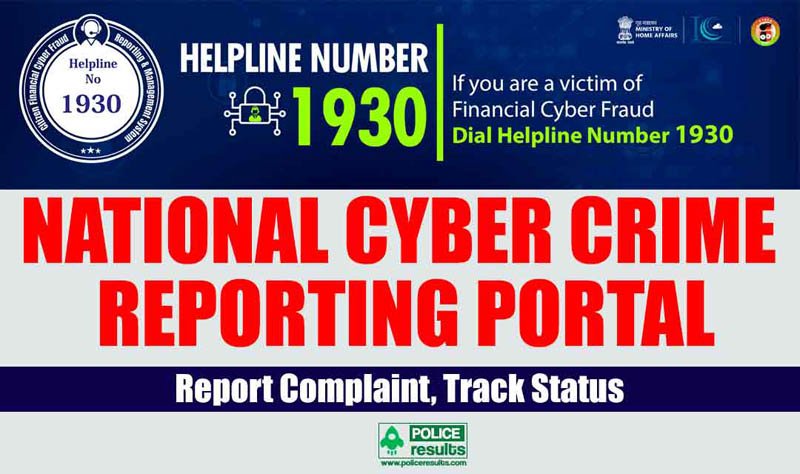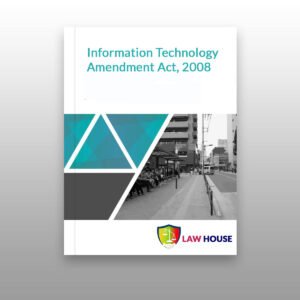The term “cybercrime” encompasses a wide range of illicit activities committed in the digital realm. These can range from financial frauds, identity theft, and data breaches to online harassment, cyberbullying, and even acts of cyber espionage. Understanding the landscape of cybercrime in India is not only vital for our personal safety and security but also critical for comprehending the legal and societal challenges posed by these digital threats.
Nature of Cybercrime Cases
- Cyber Fraud:
- Phishing: An attacker sends an email posing as a legitimate bank, requesting the recipient to click a link and enter their login credentials. For instance, they may receive an email purportedly from a bank, asking them to verify their account details.
- Online Scams: Victims may receive emails claiming they’ve won a lottery and need to pay a fee to claim their prize. After paying, they realize there was no actual prize.
- Hacking and Unauthorized Access:
- Unauthorized Access: A hacker gains access to a company’s database containing customer information without permission and steals sensitive data.
- DDoS Attacks: An online gaming company’s servers are flooded with traffic, causing them to crash and rendering the game unplayable.
- Identity Theft:
- Stolen Identity: An attacker obtains a person’s Social Security number and uses it to open credit card accounts in their name, leaving the victim with the debt.
- Carding: A cybercriminal uses stolen credit card information to make online purchases, sometimes shipping items to an address they control.
- Malware and Ransomware:
- Malware: A user unknowingly downloads a malicious attachment from a seemingly harmless email, which infects their computer and allows attackers to steal their personal files.
- Ransomware: A hospital’s computer systems are locked by ransomware, and the attackers demand a substantial ransom to unlock the data, causing patient care disruptions.
- Online Harassment and Cyberbullying:
- Cyberbullying: A teenager is relentlessly taunted and threatened on social media by classmates, causing severe emotional distress.
- Revenge Porn: An individual posts explicit photos of an ex-partner online without their consent, causing emotional trauma and damage to their reputation.
- Financial Cybercrimes:
- Credit Card Fraud: A cybercriminal obtains someone’s credit card details and uses them to make unauthorized online purchases.
- Online Banking Fraud: Hackers compromise a user’s online banking credentials and fraudulently transfer funds from their account.
- Child Exploitation:
- Child Pornography: Criminals distribute explicit images or videos involving minors, perpetuating the abuse of these victims.
- Online Grooming: An adult poses as a teenager online, gaining a minor’s trust and manipulating them into engaging in inappropriate activities.
- Cyber Espionage and State-Sponsored Attacks:
- State-Sponsored Hacking: A nation-state conducts a cyberattack on another country’s government agencies to steal classified information.
- Corporate Espionage: A competitor infiltrates a company’s servers to steal trade secrets, such as product designs or marketing strategies.
- Data Breaches:
- Data Theft: Cybercriminals breach a retail company’s database, stealing customer credit card information, which is then sold on the dark web.
- Data Leaks: A company accidentally exposes customer records due to misconfigured cloud storage, potentially exposing sensitive information.
- Social Engineering:
- Manipulation: An attacker calls an employee of a bank, posing as IT support, and convinces them to reveal login credentials, which are then used for unauthorized access.
Legal Scope of Cybercrime:
Think of cybercrime as criminal activities that happen in the digital world. Cybercriminals use computers, smartphones, or the internet to commit crimes. Here are some common types:
- Stealing Your Information: This includes identity theft, where someone pretends to be you and steals your personal details, like your bank account or Social Security number.
- Tricking You: Cybercriminals often use scams and phishing emails to trick you into giving them money or more personal information.
- Bullying Online: Cyberbullying involves using digital platforms to harass, threaten, or spread false information about others.
- Hacking: Some cybercriminals break into computer systems or networks without permission, which is known as hacking. They may steal sensitive data or disrupt services.
Laws in India:
In India, we have laws to combat cybercrimes. The most important one is the “Information Technology Act, 2000.” It covers a wide range of online activities and provides legal tools to deal with cybercriminals. For example, it makes hacking illegal and punishes those who damage computer systems.
Gaps in Cybercrime Laws:
While these laws are essential, there are still challenges:
- Crossing Borders: Cybercriminals can operate from different countries, making it hard for Indian authorities to catch them. International cooperation is crucial.
- Fast Technology Changes: Technology evolves rapidly, and new kinds of cybercrimes emerge. Our laws must keep up to address these new threats effectively.
- Hidden Identities: Cybercriminals often hide behind fake identities and anonymous online profiles, making it challenging to identify and prosecute them.
What Social Activists Can Do in India:
Social activists can contribute to the fight against cybercrime in various ways:
- Teach People: Conduct workshops and awareness campaigns to educate people, especially children and the elderly, about online safety practices.
- Ask for Better Laws: Advocate for updates to existing laws and the introduction of new legislation to address evolving cyber threats.
- Support Victims: Provide support to individuals who have fallen victim to cybercrimes, such as counseling, legal assistance, and guidance on reporting incidents.
- Privacy Matters: Promote the importance of safeguarding personal information and respecting privacy rights in the digital age.
- Teach Cybersecurity: Encourage educational institutions to include cybersecurity awareness and skills development in their curricula.
- Work Together: Collaborate with government agencies, law enforcement, and international organizations to strengthen the global response to cybercrimes.
By working collectively, social activists can help create a safer online environment for everyone and ensure that cybercriminals are held accountable for their actions.
What are the provisions under the Indian Penal Code and Information Technology Act that deal with cyber-related crimes?
| Cybercrime Type | IPC Section | IT Act Section | Description | Example |
|---|---|---|---|---|
| Unauthorized Access | – | Section 43 – Unauthorized Access | Unauthorized access to computer resources with dishonest intent, often involving identity theft. | A person steals login credentials to access someone’s bank account and transfers money without permission. |
| Hacking | Section 416 – Cheating by Personation | Section 66 – Hacking | Gaining unauthorized access to computer systems, often with the intent to modify, delete, or steal data. | A hacker infiltrates a company’s server to steal customer data or disrupt operations. |
| Online Fraud | Section 420 – Cheating | Section 66D – Cheating by Personation | Deceiving someone using the internet, such as online scams, fake profiles, or fraudulent transactions. | A scammer poses as a bank official online and convinces victims to share their credit card details. |
| Defamation Online | Section 499 & 500 – Defamation | Section 66A – Sending Offensive Messages | Spreading false statements online to harm a person’s reputation or character. | Posting false and damaging accusations about someone on social media, damaging their reputation. |
| Cyberbullying | No Specific IPC Section | Section 66A – Sending Offensive Messages | Harassing, threatening, or humiliating individuals using electronic communication, like social media or emails. | Relentlessly sending hurtful messages and threats to someone on a social media platform. |
| Child Exploitation | Section 292, 293, 354D – IPC | Section 67B – Child Pornography | Creating, sharing, or possessing explicit content involving minors, including text, images, or videos. | Distributing explicit photos of a minor through an online platform. |
| Data Theft | Section 378 – Theft | Section 66B – Theft of Computer Resource | Unauthorized copying, downloading, or stealing digital data, including sensitive information and intellectual property. | An employee steals confidential company files and shares them with a competitor. |
| Identity Theft | Section 419 | Section 66C – Identity Theft | Unauthorized use of another person’s identity, often for fraudulent activities, such as applying for loans or making purchases. | Stealing someone’s personal information to open credit card accounts in their name. |
If someone come across Cybercrime what would the person do?
If someone comes across a cybercrime or is a victim of one, it’s essential to take appropriate steps to protect themselves and report the incident. Here’s what a person should do if they encounter or fall victim to a cybercrime:
- Stay Calm and Safe:
- The first step is to stay calm and avoid panicking. Panic can lead to further mistakes or mishandling of the situation.
- Disconnect from the Internet:
- If the cybercrime involves a device connected to the internet, disconnect from the network to prevent further damage or unauthorized access.
- Document Evidence:
- Preserve any evidence related to the cybercrime. This may include screenshots, emails, text messages, or any other records of the incident.
- Change Passwords:
- If the cybercrime involves unauthorized access to accounts, change passwords immediately for those accounts. Use strong, unique passwords for each account.
- Notify Relevant Authorities:
- Report the incident to the appropriate authorities. In India, you can report cybercrimes to the Cyber Crime Cell of the local police or to the Indian Computer Emergency Response Team (CERT-In).
- Notify Financial Institutions:
- If financial information or transactions are involved, contact your bank or credit card company to report unauthorized transactions and to secure your accounts.
- Inform Social Media Platforms:
- If the cybercrime occurs on social media, report the incident to the social media platform and follow their guidelines for reporting harassment or cyberbullying.
- Use Antivirus Software:
- Ensure that your devices have up-to-date antivirus and anti-malware software to prevent further attacks or infections.
- Seek Legal Advice:
- If the cybercrime has significant legal implications, consider consulting an attorney who specializes in cybercrime or cyber law.
- Keep Records:
- Maintain a record of all communications related to the incident, including dates, times, and contact details of individuals or organizations involved.
- Educate Yourself:
- Learn about cybersecurity best practices to protect yourself from future cybercrimes. This includes regularly updating your software, being cautious with email attachments and links, and avoiding sharing sensitive information online.
- Support and Counseling:
- If the cybercrime has caused emotional distress, consider seeking support from friends, family, or a counselor.
- Be Wary of Retaliation:
- Do not engage in retaliation against the perpetrator. This can lead to legal issues and further escalate the situation.
Remember that cybercrimes can have serious consequences, and it’s crucial to report them promptly and cooperate with law enforcement authorities during investigations. Additionally, taking preventive measures to secure your digital life can reduce the risk of falling victim to cybercrimes in the future.
What are the remedies if the local police station is unable to help or lacks support from the police station?
If you encounter a cybercrime and find that your local police station is unable to help or lacks the necessary support and expertise, you can explore alternative avenues for assistance and remedies. Here are some steps to consider:
- Contact a Cyber Crime Cell: Many states and metropolitan areas have dedicated Cyber Crime Cells or Cyber Crime Investigation Units with specialized knowledge in handling cybercrimes. Look for the nearest Cyber Crime Cell, contact them, and file a complaint. They often have the expertise to investigate cybercrimes effectively.
- Contact a Higher Authority: If you are not satisfied with the response from your local police station, consider contacting a higher authority within the police department, such as the Superintendent of Police (SP) or Commissioner of Police, depending on your location. They may direct your case to a more experienced unit.
- File a Complaint Online: Some states in India offer online platforms to report cybercrimes. For instance, you can file a complaint with the Indian Computer Emergency Response Team (CERT-In) through their website. CERT-In can assist in handling various cybercrimes and coordinating with relevant authorities.
- Legal Assistance: Consult with a lawyer who specializes in cybercrime or cyber law. They can guide you on the legal aspects of your case, provide advice on pursuing legal action, and represent you in court if necessary.
- Approach NGOs and Cybersecurity Organizations: Some non-governmental organizations (NGOs) and cybersecurity organizations in India assist cybercrime victims. They can provide guidance, support, and sometimes even legal aid. Reach out to organizations like the Cyber Peace Foundation for assistance.
- Contact Your Local Lawmaker: If you believe that the local law enforcement agencies are not adequately equipped to handle cybercrimes, you can contact your local Member of Legislative Assembly (MLA) or Member of Parliament (MP) and request their intervention. They may be able to raise the issue with higher authorities.
- Consider Private Investigators: In cases where law enforcement assistance is limited, you can hire a private investigator with expertise in cybercrimes. They can conduct investigations and gather evidence that may be used in legal proceedings.
- Document Everything: Maintain detailed records of all interactions with law enforcement, including dates, times, names of officers you spoke to, and their responses. This documentation can be useful if you decide to escalate the matter.
- Contact the Ombudsman or Public Grievance Cell: Some states have ombudsman offices or public grievance cells that handle complaints against government agencies, including the police. You can approach these offices if you feel your complaint is not being adequately addressed.
- Online Reporting Portals: Explore online platforms like the National Cyber Crime Reporting Portal (www.cybercrime.gov.in) to report cybercrimes directly to law enforcement agencies. These portals may help route your complaint to the appropriate authorities.
Remember that addressing cybercrimes can be complex, and it’s essential to persist in seeking help until your case is adequately addressed. Additionally, taking preventive measures to protect yourself from cybercrimes is crucial to reduce the risk of becoming a victim in the first place.
Contact Details of national CyberCrime reporting portal:


Debshankar Banik Chowdhury is a seasoned legal professional, information security expert & Privacy Professional based in Kolkata. With years of experience in both the legal and digital realms, Debshankar specializes in providing legal counsel and safeguarding digital assets. As a dedicated lawyer and cyber defender, he is committed to helping clients navigate the complexities of the legal landscape while securing their digital world. Explore his portfolio and discover how Debshankar’s unique blend of skills can protect your interests and data.









![Honey trap in Cybercrime: A to Z guide Exploring Honey Trap in Cyberspace [With Video]](https://www.lawhousekolkata.com/wp-content/uploads/Post-Images/Honey-Trap-300x169.jpg)















































